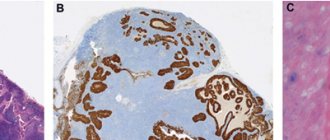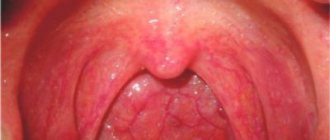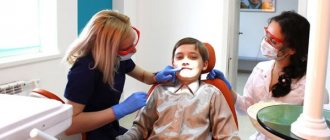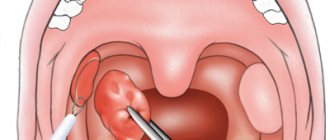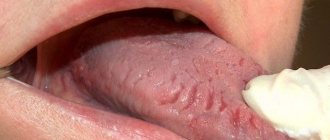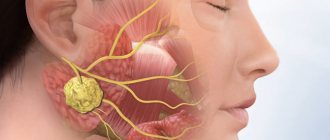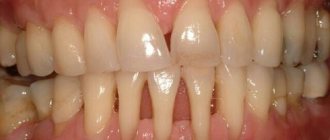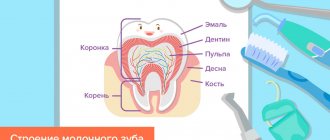08/25/2021
180 321
9 minutes
Author, editor and medical expert – Klimovich Elina Valerievna.
Inflammation of the tonsils, or tonsillitis, is a common disease. The tonsils are located at the crossroads of the respiratory and digestive tracts and are constantly faced with a huge number of irritants and microorganisms1 that enter the body through the mouth and nose. Sometimes this leads to the development of an inflammatory process. Let's figure out what signs can be used to suspect tonsillitis, and how to treat it in adults.
Up to contents
A little anatomy and physiology
The palatine tonsils are located on the side walls of the pharynx and are shaped like large almond kernels. The second name - “tonsils” - tonsils received due to their resemblance to acorns, which are called “glandulae” in Latin. Since the Latin word for tonsils is “tonsilla,” their inflammation is called tonsillitis.
The palatine tonsils belong to the organs of the immune system and are small accumulations of lymphoid tissue 2. The part of the tonsils protruding into the pharynx has depressions (lacunae), in the walls of which there are numerous slit-like pockets (crypts)1. The surface of the crypts is the “working area” of the tonsils. Basic physiological processes take place here: immune cells, phagocytes, absorb microbes that have penetrated the tonsils, “study” them, send the received information to higher departments of the immune system, and then kill the infection1. If the microbes are very aggressive and there are a lot of them, and the immune system is weakened, an infectious inflammation of the tonsils develops - tonsillitis.
Up to contents
Causes of tonsillitis
Depending on the nature of the course, tonsillitis can be:
- acute (also called sore throat),
- chronic1,2,3.
The cause of acute inflammation of the tonsils is infection1. It can be viral, bacterial or mixed1,2.
The viral nature of sore throat predominates in adults and children over 15 years of age1,2. It usually develops with ARVI, which is caused by rhinoviruses, adenoviruses, and parainfluenza viruses1. In this case, tonsillitis is accompanied by rhinitis, pharyngitis, laryngitis and other respiratory tract diseases1.
In children 5-15 years old, bacterial tonsillitis is more common, and in first place (up to 30% of cases) among them is the most dangerous type of sore throat, caused by beta-hemolytic streptococcus of group A1. In adults, this type of tonsillitis is much less common1, and among the bacteria that cause the disease, streptococci of other groups, corynebacteria, Haemophilus influenzae, Neisseria, and staphylococci predominate1.
The cause of chronic tonsillitis is also an infection, but, unlike acute processes, it is caused by less aggressive pathogens2. In this case, there may be no acute inflammation of the tonsils; the process is initially chronic in nature and is hidden behind frequent acute respiratory viral infections and inflammatory diseases of the oral cavity and pharynx (non-anginal form of chronic tonsillitis)2.
Chronic inflammation leads to the death of functional, that is, lymphoid, tissue of the tonsils and its replacement with connective tissue1. The tonsils gradually lose their protective functions, often become easy prey for microbes and viruses, become inflamed and turn into a breeding ground for infection1 and an irritant for the immune system. As a result of chronic tonsillitis, immune disorders often occur, leading to the development of infectious-allergic and autoimmune diseases1,2.
Up to contents
Symptoms of tonsillitis
The main symptom of both viral and bacterial tonsillitis is a sore throat, which gets worse when swallowing and while talking1. Sometimes it reaches such a degree of severity that it is difficult to take even a small sip of water, let alone eat food.
A sore throat may be accompanied by:
- increased body temperature, up to high fever;
- redness of the tonsils and the appearance of plaque or blistering rashes on them;
- soreness of the anterior cervical lymph nodes1.
If a runny nose and cough are present along with this, most likely the inflammation of the tonsils is of a viral nature1.
General intoxication caused by infection is expressed in the appearance of weakness, daytime sleepiness, lethargy, headache, aching muscles and joints1.
Depending on the picture that can be seen when examining the throat, sore throat can be catarrhal, follicular, lacunar1.
With catarrhal tonsillitis, the tonsils become red and swollen1. With follicular, they sharply increase in volume, whitish dots appear on their surface - follicles filled with pus, which are visible through the inflamed mucous membrane1. With lacunar angina, the surface of the tonsils becomes covered with pus, which protrudes from the lacunae1.
Angina caused by beta-hemolytic streptococcus is characterized by the appearance of purulent films on the tonsils, which are firmly associated with the underlying tissues1. When the films are rejected, bleeding erosions and ulcers form on the tonsils1.
Tonsillitis associated with the Coxsackie virus occurs as a herpetic sore throat, in which many small blisters filled with cloudy mucus appear on the tonsils1.
Up to contents
Stages of the disease
The staging of tumors with intracellular DNA inclusions of human papillomavirus type 16 (16HPV) and without it differs.
For virus-negative neoplasms, everything is simple:
- Stage 1 - local formation up to 2 cm, without metastases in the lymph nodes;
- 2 tbsp. - tumor less than 4 cm and lymphatic collector without signs of cancer;
- 3 tbsp. - neoplasm more than 4 cm with “clean” lymph nodes or less and there is a node up to 3 cm;
- 4 tbsp. suggests either a primary tumor of any size with distant metastases, or a very widespread lesion of the oropharynx with a large conglomerate of lymph nodes on the same side, or a not very large cancerous node with lymph nodes on the opposite side of the neck.
When staging papillomavirus cancer in stages 1 and 2, metastatic lymph nodes are possible, and stage 4 - only with distant metastases from any tumor and lymph nodes.
Features of chronic tonsillitis
Chronic tonsillitis occurs with exacerbations, during which the same symptoms appear as with angina2,3.
During the quiet period3:
- discomfort in the throat bothers almost 98% of patients;
- putrid odor from the mouth is noted by up to 88% of patients;
- Doctors detect plugs and purulent plaque on the tonsils in almost 84% of cases;
- adhesions between the tonsils and arches are detected in approximately 60% of patients;
- enlargement and pain when palpating the cervical lymph nodes are diagnosed in 62% of cases;
- joint pain bothers every third patient;
- low-grade fever (up to 380C) is noted by 18% of patients;
- pain in the heart – about 8% of patients with chronic tonsillitis3.
Depending on the stage of development, the disease can occur in the following forms2,3:
- The simple form, in fact, is the initial stage of the disease, in which the pathological process is limited mainly to the tonsils2,3.
- Toxic-allergic form:
- Stage I: signs of general intoxication appear, such as low-grade fever, weakness, fatigue, as well as aching joints and heart pain associated with functional disorders.
- Stage II: complications of tonsillitis, such as peritonsillar abscess, sepsis, rheumatism, heart defects, etc., are added to general intoxication2,3. In this case, the picture of tonsillitis is complemented by the symptoms of these diseases.
Up to contents
Surgical methods for removing tonsils
Previously, tonsils were removed in the simplest surgical way - using a scalpel and wire thread. Today this method is practically not used.
There are many modern methods for removing tonsils, and here are just the most popular:
1.
IR laser
. Instead of a scalpel, a laser beam is used, which immediately solders the sutures along the edges and ensures quick rehabilitation with minimal blood loss.
2. Electrocoagulation
. It works in the same way as a laser, but it heats up neighboring tissues and can lead to undesirable consequences in the form of burns. However, cases are rare, and in general the method is quite safe.
3. Ultrasound
. High-frequency ultrasound cuts off inflamed tissue and instantly heals sutures. Fast recovery and minimal blood loss also indicate the safety of this method.
4. Cryodestruction
. Freezing tonsils with liquid nitrogen. The tissue is not cut off, but frozen and gradually falls off. The procedure is painless, but recovery takes a long time and can be unpleasant.
Treatment of tonsillitis
The appearance of symptoms of tonsillitis is a reason to consult a doctor. Self-medication in this case is unacceptable. Only a doctor can determine the form of the disease, establish its causes and select the correct treatment.
For tonsillitis caused by bacterial microflora, and especially group A beta-hemolytic streptococcus, antibiotics . In addition to them, doctors recommend local treatment - irrigation and gargling with preparations based on infection-killing antiseptics and analgesics that relieve pain1,2. In mild cases and when streptococcal tests are negative, treatment is generally limited to local therapy1,2.
HEXORAL®4,5,6,7,8 can be used as a combination drug for local therapy of tonsillitis . The HEXORAL® line includes solutions for gargling and irrigating the throat, as well as lozenges with various active ingredients and flavors.
The HEXORAL® solution is based on the antiseptic hexetidine. It is active against most bacteria and some viruses and can have a mild analgesic effect4. It can also help clear tonsils and relieve sore throats.
HEXORAL® aerosol has a special nozzle, thanks to which the solution can be evenly distributed throughout the entire pharyngeal mucosa5.
Traditional treatment of tonsillitis can also be supplemented with lozenges HEXORAL® TABS6, HEXORAL® CLASSIC7 and HEXORAL® TABS EXTRA8. The last of these drugs contains the powerful anesthetic lidocaine and can be useful in combating severe sore throat8.
Conservative treatment is also indicated for patients with a simple form of chronic tonsillitis2,3 . It includes not only drug therapy, but also medical procedures such as washing the lacunae of the tonsils, introducing antibacterial and antiseptic drugs into them, as well as various physiotherapeutic procedures that help cleanse the tonsils and stimulate their protective functions3. HEXORAL® preparations can also be used as agents for local therapy of tonsillitis4,5,6,7,8.
Chronic tonsillitis in advanced form is an indication for surgical treatment , that is, surgery to remove the tonsils2,3.
Up to contents
The information in this article is for reference only and does not replace professional advice from a doctor. To make a diagnosis and prescribe treatment, consult a qualified specialist.
Which doctor should you consult if you have inflammation of the tonsils?
The diagnosis and treatment of diseases of the tonsils is carried out by an ENT doctor, that is, an otolaryngologist. You should contact a specialist when the first symptoms of inflammation appear. However, few people rush to consult a doctor if their throat starts to hurt a little. It is possible that you will be able to cope with the disease on your own.
However, there are some conditions that require immediate medical attention:
- Body temperature reaches 38 °C and above. It lasts longer than 3 days.
- The person’s well-being deteriorates sharply.
- First there is an improvement, and then a deterioration in the condition.
- The child's tonsils become inflamed.
- Purulent foci of infection are visible in the throat.
Literature
- S. Ya. Kosyakov, I. B. Angotoeva. Modern ideas about tonsillopharyngitis. Medical Council, No. 17, 2015, pp. 32-36.
- T. S. Polyakova, E. P. Polyakova. Chronic tonsillitis: diagnosis, treatment, prevention. Russian Medical Journal, No. 2, 2004, pp. 65-68.
- G. R. Kaspranskaya, A. S. Lopatin. Chronic tonsillitis: different views on an old problem. Medical Council, No. 5–6, 2013, pp. 69-71.
- Instructions for use of the drug HEXORAL® solution.
- Instructions for use of the drug HEXORAL® aerosol.
- Instructions for use of the drug HEXORAL®TABS.
- Instructions for use of the drug HEXORAL®CLASSIC.
- Instructions for use of the drug HEXORAL®TABS EXTRA.
